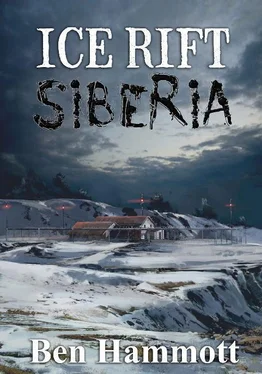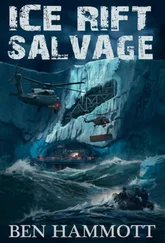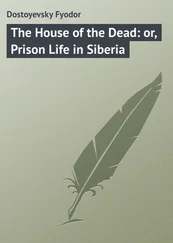“What do you want me to do?” asked Svetlana.
“I don’t even know what I’m doing, but be ready with the container I guess.” I’ll remove the grill and see if it’s inside. If it is, I’ll give it a blast of CO 2. Hopefully that will subdue it. If it works, I’ll drag it out into the container, and we rush it downstairs and let the others deal with it.”
Svetlana nodded. The plan seemed simple enough. “And if it’s not inside?”
“We lock the room and make our report.” Alexei gripped the slatted grill, yanked it free and dropped it to the floor. He cautiously investigated the vent with the flashlight. Though it was empty, he noticed a faint oily residue on the bottom, similar to a slug trail, though less noticeable.
“What do you see?” asked Svetlana, gazing nervously around the room. She wasn’t certain the creature wasn’t concealed and watching them.
“Vent’s empty as far as I can see, but it has definitely been here.” Without thinking, he wiped a finger in the greasy slick and looked at his slightly blackened fingertip before showing Svetlana.
“Not sure that was a clever thing to do after seeing the melted remains of that monkey and what it did to Waldemar’s hand.”
“Shit!” Alexei frantically wiped the finger clean on his shirt.
“It’s probably its saliva, if it has saliva, that does the damage, so don’t French kiss it and you should be okay.”
“Not something I ever plan on doing.” Satisfied he had cleared the stain from his finger, Alexei stared along the vent weighing up their options before looking down at Svetlana. “You know we have to check it out to find out where it went?”
Svetlana glanced at the small opening and scoffed. “You’ll never fit in there.”
“I won’t but you will.”
*****
Stanislav and Krisztina halted at the elevator that led to level 4. Unlike the upper three levels, the lowest level hadn’t seen use since the facility had been abandoned in the seventies. Luka, who had been down to power up the main generator, had been the first to walk its corridors in years.
While Stanislav unlocked and opened the hatch covering two red and green buttons, Krisztina engaged the lever on the power unit fixed to the wall. When it clunked loudly into the on-position, the green elevator call button glowed, and Stanislav pressed it.
Krisztina joined Stanislav at the door listening to the winch motor raise the elevator from the lower level and followed him inside when the doors slid open. A press of the button marked with a down arrow symbol closed the doors and set the elevator descending seventy feet. Both hesitated when the elevator glided to a halt and the doors slid open. They stared into the dark corridor lit only by the elevator’s single light. Separated from the air conditioning system of the upper levels to avoid contaminants spreading, the air they breathed was stale, musty, oppressive, as if tainted with the suffering and deaths of those once experimented on down here.
Both were aware of some of what had gone on down here during Stalin’s era and later. This was Laboratory 12, where the Soviet secret police concocted exotic poisons used to kill dissidents in hideous and (mostly) untraceable ways. When it came to murdering your enemies for political power, both at home and abroad, poison had been Russia’s preferred weapon. To safeguard the anonymity of the assassin, and hence Russia’s involvement, the mission of Laboratory 12 had been to devise a poison that was tasteless, odorless, and undetectable in an autopsy. To test and refine the effectiveness of different powders, beverages, liquors, and diverse types of injection and dispersal apparatuses, toxins were administered to prisoners and persons subject to execution. When a target was identified, prisoners of similar age and build were tested to identify the correct killing dosage. It often took a few attempts and the lingering deaths of a few unfortunates before the correct dosage was determined. An autopsy would then be carried out to see if any detectable residue remained. If there was, the toxin would be refined and more suitable prisoners tested until a satisfactory result was attained.
Stanislav stepped into the corridor, crossed to a power panel beside the doors and turned the power lever with a loud clunk that echoed though the level. Lights flickered into life along the corridor and highlighted the lime green paint peeling from concrete walls and the rows of cell doors lining the opposite wall.
Though neither of them had ever set foot on this level before, Stanislav and Krisztina had consulted the blueprint of the facility stuck to the wall of the security office before coming down.
Stanislav glanced at Krisztina when she stepped from the elevator. “Let’s head straight for the laboratories located at the far end.”
Krisztina joined Stanislav walking along the corridor. She glanced in some of the open cell doors. Each were equipped with two simple metal beds furnished with thin mattresses and a single blanket. She could almost sense their past occupants’ fear and suffering. When she halted at a closed cell and moved her face to the small observation window, Stanislav’s hand on her shoulder halted her.
“It’s best you don’t look inside. When this place was abandoned, so were any prisoners locked in their cells.”
Visualizing the terrible fate of the prisoners left to die inside, Krisztina stepped back from the door. “That’s horrible.”
“Stalin and some of his subordinates were evil men. However, it’s poetic that Stalin was responsible for the existence of this place and one of the poisons created here was probably responsible for his death.”
Surprised by the news, Krisztina asked, “Is that true?”
Stanislav shrugged. “Allegedly a poison concocted here was administered to Stalin by one of his bodyguards, Ivan Khrustalev, acting on orders from Lavrenti Beria, the dreaded head of the Soviet secret police, when he feared Stalin was about to have him executed. That was the fate of previous secret police chiefs when Stalin thought they were becoming too powerful. Also, apparently, on the day he died, Stalin planned to begin the mass deportation of Soviet Jews to Siberia and the republic of Kazakhstan—an act calculated to provoke the West and start World War III. Though Stalin was confident he could win such a war and destroy capitalism, he had to move quickly before his half-ruined, half-starved country collapsed. Others in his administration weren’t so optimistic of the outcome and may have joined with Lavrenti to ensure Russia wasn’t obliterated in an all-out nuclear holocaust brought about by their country’s mad, paranoid dictator.”
“What a terrible time to have lived through, though due to Stalin’s strict and brutal regime, millions didn’t, of course.” Krisztina pointed at the cluster of glass-walled rooms at the far side of the hall they had entered. “Is that the infamous Laboratory 12?”
“It is. Laboratory 12 is the collective name for a group of twelve rooms containing laboratories, observation and control rooms, plus contaminant storage chambers for the storage of the chemicals and toxins. They were all cleared before being sealed and abandoned, so it’s perfectly safe.”
“I think I’ll avoid them all the same if possible,” said Krisztina, who lacked confidence in Russia’s track record of cleaning up contamination. She followed Stanislav into the first laboratory and glanced around the room.
Surrounded on all sides by glass walls looking into the surrounding rooms, unfortunate prisoners brought here to be experimented on could see the stages of their demise. First, they would be prepped here and strapped to one of the three metal trollies parked along one wall. When ready, they would be wheeled into the test chamber where they would be administered the poison and observed as the toxin took effect. If they survived, they would be taken to the adjoining recovery room to recuperate until they were ready for the next round of tests. If they died, they would be taken to the last room, the morgue, and dissected to study the effects of the poison and if any residue remained.
Читать дальше












